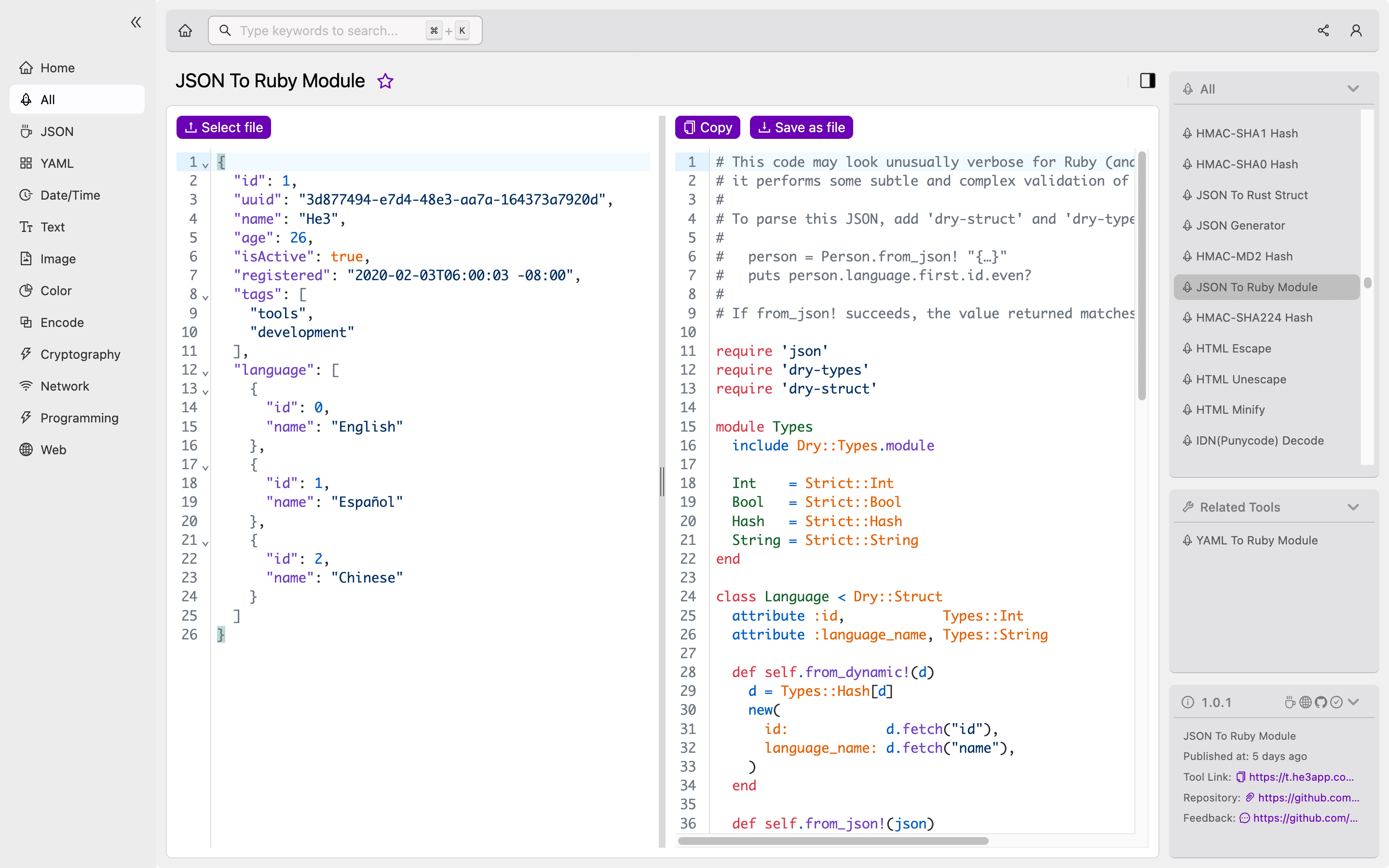Are you a developer who often has to deal with data transfer in web development projects? If yes, then you must have come across the JSON to Ruby module. This module has become one of the most popular tools for developers to transfer data between two systems, and for a good reason. In this article, we will discuss what the JSON to Ruby module is, how it works, its key features, common misconceptions, and FAQs for developers.
What is the JSON to Ruby Module?
The JSON to Ruby module is a software component that allows you to encode or decode JSON (JavaScript Object Notation) data in Ruby. JSON is a widely-used data format that is used to transfer data between two systems. It is lightweight, easy to read and write, and is language-independent. The JSON to Ruby module simplifies data transfer between Ruby and other systems that use JSON as a data format.
How it Works
The JSON to Ruby module works by converting data in JSON format to Ruby objects or vice versa. This module is part of the standard Ruby library and can be accessed through the JSON gem. The module provides two main methods, JSON.parse() and JSON.generate(). The JSON.parse() method is used to convert JSON data into Ruby objects, while JSON.generate() is used to generate JSON data from Ruby objects.
require 'json'
json_data = '{"name": "John", "age": 30, "city": "New York"}'
ruby_object = JSON.parse(json_data)
puts "Name: #{ruby_object['name']}, Age: #{ruby_object['age']}, City: #{ruby_object['city']}"Key Features
Some of the key features of the JSON to Ruby module include:
- Supports parsing and generation of JSON data
- Converts JSON data to Ruby objects and vice versa
- Allows you to set options for parsing and generation, such as the maximum depth of the output data
Scenarios for Developers
The JSON to Ruby module is useful in various scenarios for developers, such as:
- Data transfer between two systems that use JSON as a data format
- Data serialization and deserialization in web development projects
- Creation of RESTful APIs that use JSON as a data format
Misconceptions and FAQs
There are several misconceptions about the JSON to Ruby module. Some of the most common ones are:
- JSON is a programming language - JSON is not a programming language but a data format that is language-independent.
- The JSON to Ruby module only works with Ruby - The JSON to Ruby module is specifically designed for use with Ruby, but there are equivalent modules for other programming languages.
Some frequently asked questions about the JSON to Ruby module include:
- Is the JSON to Ruby module easy to use? - Yes, the module is easy to use and does not require any special knowledge of JSON.
- Can the JSON to Ruby module handle large data sets? - Yes, the module can handle large data sets, but it is advisable to use options that limit the output to a specified depth.
How to Use JSON To Ruby Module
Developers can use the JSON to Ruby module easily in their projects. Alternatively, they can use JSON To Ruby Module tool in He3 Toolbox (https://t.he3app.com?yv2w) for quick and efficient data transfer. This tool is user-friendly and does not require any special knowledge of JSON.

Conclusion
The JSON to Ruby module is an important software component for developers who need to transfer data between systems that use JSON as a data format. This module simplifies data transfer, making it easy for developers to convert JSON data into Ruby objects or generate JSON data from Ruby objects. By understanding the concept of the JSON to Ruby module, developers can take advantage of its key features to streamline their web development projects.
References:
